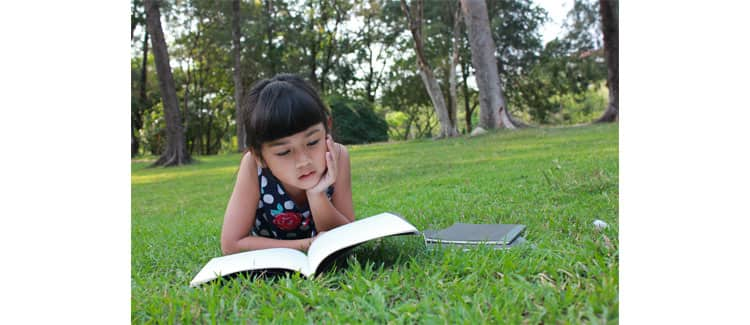SSY - Sukanya Samriddhi Yojana
Sukanya Samriddhi Yojana (SSY) is a financial scheme created as part of the "Beti Bachao Beti Padhao" initiative. It is designed to ensure the financial stability of young girls. This scheme can be opened at designated banks and post offices.
Read more
Nothing Is More Important Than Securing Your Child's Future
Invest ₹10k/month your child will get ₹1 Cr# Tax-Free*
-
Home

-
Child Plans

- Sukanya Samriddhi Yojana
What is the Sukanya Samriddhi Yojana (SSY)?
Sukanya Samriddhi Yojana is a savings scheme regulated by the Government of India for girls. Under this scheme, parents or legal guardians can open an account in the name of a girl child and deposit a fixed amount annually. The minimum age for opening an account is 10 years, and the maximum is 14 years. The account remains active until the girl turns 21 years old.
The scheme offers an annual interest rate of 8.2%, compounded yearly. Partial withdrawals from the account can be made at the age of 21 or before, subject to certain penalties.
Sukanya Samriddhi Yojana is a tax-saving scheme. The deposited amount and interest earned are exempted from taxation.
Primary Objectives of Sukanya Samriddhi Yojana:
-
Counter bias against girl children by promoting financial security and equal opportunities.
-
Provide a safety net for girls by encouraging parents to save for their daughters' future.
-
Address challenges faced by girls, like limited access to education and opportunities.
-
Support education, well-being, and overall development of girl children in India.
Sukanya Samriddhi Yojana Information
| Scheme Name | Sukanya Samriddhi Yojana (SSY) |
| Interest Rate | 8.2% per annum Q4(January-March 2024) |
| Minimum Investment | Rs 250 |
| Maximum Investment | 1.5 lakhs |
| Maturity Period | 21 years |
| Tax Benefits | You can avail tax benefit of up to INR 1.5 lakh during a financial year under this scheme under section 80C of the Income Tax Act of 1961. |





Features and Benefits of the Sukanya Samriddhi Yojana Scheme
Here are the benefits of the Sukanya Samriddhi Yojana:
-
Flexible Payments: SSY allows deposits from Rs. 250 to Rs. 1.5 lakh yearly, making it accessible to all.
-
Mode: The deposits in the beneficiary accounts can be made via online transfer, net banking, demand draft, cash or cheque.
-
Educational Expenses: Withdraw up to 50% of the previous year's balance for educational costs with proof of admission.
-
Attractive Interest Rates: SSY offers a high 8.2% annual interest rate.
-
Guaranteed Returns: As a government-backed plan, SSY assures returns upon maturity, ensuring a secure investment.
-
Convenient Transfer: Easily transfer SSY accounts between banks and post offices nationwide for hassle-free management.
-
Long-Term Investment: SSY requires the account to remain active until the girl child reaches 18 or 21, promoting compounding benefits.
-
Financial Independence: Maturity amount and interest go directly to the girl child, enabling financial independence for education or career pursuits.
-
Tax Benefits: To encourage investments in SSY, the scheme offers significant tax benefits for the account holder:
-
Investments made in the SSY scheme are eligible for deduction under Section 80C of the Income Tax Act up to a maximum cap of Rs. 1.5 lakh.
-
The interest earned on the SSY account is exempt from tax under Section 10(10D) of the Income Tax Act.
-
The proceeds received upon maturity or withdrawal from the SSY account are also exempt from income tax.
-
Eligibility Criteria for Sukanya Samriddhi Yojana
The following are the eligibility criteria for Sukanya Samriddhi Yojana:
-
The girl child must be ten years or younger.
-
Legal guardians or parents are eligible to open an SSY account in the name of the girl child.
-
The depositor can only open one account per girl child. However, two accounts can be opened in the case of twins or two girls. Not more than two accounts are allowed to open in a family.
-
The third account can be opened in case of one girl child plus female twins.
What is the Age Limit & Maturity Period of Sukanya Samriddhi Yojana?
The Age Limit & Maturity Period of Sukanya Samriddhi Yojana (SSY) are as follows:
-
Age Limit for Opening an SSY Account
A girl child can have only one SSY account. The account can be opened anytime between her birth and her 10th birthday.
-
Beneficiary of SSY
Any resident Indian girl child is considered a beneficiary under SSY from the time of opening the account until maturity or closure.
-
Deposits under SSY
-
The guardian/parent can deposit funds and operate the account until the girl child reaches the age of 18, with a maximum annual deposit of Rs. 1,50,000 for a period of 15 years. However, contributions must be made for the full 15 years, and funds can be withdrawn when the girl child reaches 18 for marriage expenses or upon reaching 21 years old.
-
Once the girl child turns 18, she must take over the operation of the SSY account.
-
The minimum deposit amount is Rs. 250 (previously Rs. 1,000), and subsequent deposits can be made in multiples of Rs. 50.
-
Deposits can be made through cheque, cash, Demand Draft (DD), or online transfer.
-
-
Interest on Deposits
-
The current interest rate for the 4th quarter of FY 2023-2024 (January to March 2024) is 8.2% per annum.
-
If the minimum annual deposit of Rs. 250 is not made, the account is considered in default. The amount in the 'Account under default' will continue to earn interest until the maturity date, but a penalty of Rs. 50 per default year must be paid to regularize the account within 15 years of opening.
-
-
Maturity Period of SSY
-
The maturity period of an SSY account is 21 years from the date of opening or upon the girl child's marriage after turning 18.
-
Contributions need to be made for only 15 years. After that, the SSY account will continue to earn interest until maturity.
-
No interest is payable after the completion of the SSY tenure, i.e., after 21 years from account opening.
-
Interest stops accruing when the girl child becomes a non-citizen or a non-resident of India.
-
Sukanya Samriddhi Yojana Interest Rate
The current interest rate for the Sukanya Samriddhi Yojana (SSY) is 8.2% per annum. The interest is compounded on a yearly basis, and it is subject to change based on government decisions. The rate of interest is determined quarterly.
**Please note that once the duration of the scheme is completed or if the girl becomes a Non-Resident Indian (NRI) or a non-citizen, interest payments are no longer applicable.
Historic Rates of SSY
| Period of Sukanya Samriddhi Yojana Interest Rates | Sukanya Samriddhi Yojana Interest Rate (% annually) |
| July to September 2024 (Q2 2024-2025) | 8.2 |
| April to June 2024 (Q1 2024-2025) | 8.2 |
| January to March 2024 (Q4 FY 2023-24) | 8.2 |
| October to December 2023 (Q3 FY 2023-24) | 8.0 |
| July to September 2023 (Q2 FY 2023-24) | 8.0 |
| Apr to Jun 2022 (Q1 FY 2023-24) | 8.0 |
| January to March 2023 (Q4 FY 2022-2023) | 7.6 |
| October to December 2022 (Q3 FY 2022-23) | 7.6 |
| Jul to Sep 2022 (Q2 FY 2022-23) | 7.6 |
| Apr to Jun 2022 (Q1 FY 2022-23) | 7.6 |
| Jan to Mar 2022 (Q4 FY 2021-22) | 7.6 |
| Oct to Dec 2021 (Q3 FY 2021-22) | 7.6 |
| Jul to Sep 2021 (Q2 FY 2021-22) | 7.6 |
| Apr to Jun 2021 (Q1 FY 2021-22) | 7.6 |
| Jan to March 2021 (Q4 FY 2020-21) | 7.6 |
| Oct to Dec 2020 (Q3 FY 2020-21) | 7.6 |
| Jul to Sep 2020 (Q2 FY 2020-21) | 7.6 |
| Apr to Jun 2020 (Q1 FY 2020-21) | 7.6 |
| Jan to March (Q4 FY 2019-20) | 8.4 |
| Oct to Dec 2019 (Q3 FY 2019-20) | 8.4 |
| Jul to Sep 2019 (Q2 FY 2019-20) | 8.4 |
| Apr to June 2019 (Q1 FY 2019-20) | 8.5 |
| Jan to March 2019 (Q4 FY 2018-19) | 8.5 |
| Oct to Dec 2018 (Q3 FY 2018-19) | 8.5 |
| Jul to Sep 2018 (Q2 FY 2018-19) | 8.1 |
| Apr to June 2018 (Q1 FY 2018-19) | 8.1 |
| Jan to March 2018 (Q4 FY 2017-18) | 8.1 |
| Oct to Dec 2017 (Q3 FY 2017-18) | 8.3 |
| Jul to Sep 2017 (Q2 FY 2017-18) | 8.3 |
| Apr to Jun 2017 (Q1 FY 2017-18) | 8.4 |
Sukanya Samriddhi Yojana Calculator
The Sukanya Samriddhi Yojana calculator is a tool that helps you estimate the maturity amount you'll receive from your SSY investment. It considers factors like your annual deposit amount, interest rate, and investment period. This helps you plan your contributions and understand the potential returns for your daughter's future.
Sukanya Samriddhi Yojana Calculator
Latest SSY Interest Rate = 8.2%Yearly Investment
You can invest maximum upto ₹1,50,000Girl's Age
Maximum age should be 10 yearsStart Year
Investment term is 21 yearsWhat are the Sukanya Samriddhi Yojana Withdrawal Rules?
The investor is entitled to withdraw the principal amount along with interest on the maturity of the investment. Below are the rules:
-
Withdrawal is allowed if the girl child is 18 years old and has completed 10th standard. The money must be used for admission fees or other charges at the educational institution.
-
Required documents: Admission letter and fee receipt.
-
The maximum amount that can be withdrawn is 50% of the previous year's available balance. Withdrawal can be made in 5 instalments or as a lump sum.
-
Premature withdrawal is allowed if the girl child turns 18 and is getting married. The application must be submitted at least one month before the marriage, along with the age proof of the beneficiary.
The investor is required to present the following documents to withdraw funds:
-
Address Proof
-
Citizenship documents
-
Application form for the withdrawal of the amount.
-
ID Proof

People also read: Best Child Plan
What are the Rules for Premature Withdrawal from an SSY Account?
Premature withdrawal from an SSY account is allowed under the following conditions:
-
The girl attains the age of 18 years and is getting married. An application must be submitted at least one month before or three months after the marriage, along with age verification documents.
-
If the girl child becomes a non-citizen or non-resident, the account will be deemed closed. The change in status must be reported within one month.
-
In the unfortunate event of the girl child's demise, the guardian can withdraw the balance with the submission of the death certificate.
-
If the account has been active for 5 years or more and its continuation is causing difficulties to the girl child, premature closure can be opted for.
-
Premature closure is also allowed for other reasons, but the interest earned will be at the same rate as post offices provide.
What are the Documents Required to Open an SSY Account?
The investor is required to submit the following details to open an SSY account in the name of the girl child:
-
Depositor is required to submit the birth certificate of a girl child.
-
Parents or legal guardians must submit a photo ID.
-
Address proof must be furnished before the bank for the SSY account.
-
Other KYC proofs, such as PAN card, and Voter ID must be done.
How to Open a Sukanya Samriddhi Account?
Below are the following steps one should follow to open a Sukanya Samriddhi Account:
-
You must visit the nearest bank branch or post office and collect the application form.
-
Complete the application form and submit it along with the essential documents mentioned above.
-
The investor is required to pay the deposit amount, which could range between INR 250 to INR 1 lakh.
-
The bank or post office will verify the provided details by the depositor, and an SSY account will be opened if all the details are correct by the bank or post office.
How to Fill an SSY Account Form for the Post Office?
To fill an SSY account form for the post office, follow these simple steps:
-
Visit the nearest post office and request the SSY account application form.
-
If you already have a savings account with the post office, mention your account number.
-
Provide the post office branch details and postal address in the' To The Postmaster' section.
-
Attach a photograph of the applicant.
-
Fill in the applicant's name and select 'Sukanya Samriddhi Yojana' as the chosen option.
-
Complete the 'Account Type' and 'Account Holder Type' fields with the relevant information.
-
Specify the initial deposit amount you wish to make once the account is created.
-
Provide other necessary details like gender, Aadhaar number, PAN, address, etc.
-
Sign page 1 to authorize all the information provided.
-
On Page 2, section (5), indicate if you want to set standing instructions for deposits.
-
Check the box next to SSA to confirm that no other SSY account exists.
-
Enter the date and signature as required.
-
Complete the nomination details section.
-
If the applicant is illiterate, have two witnesses sign on their behalf.
-
Finally, provide the place, date, and signature at the end of the nomination section.
By following these steps, you can successfully fill out the Sukanya Samriddhi Yojana account form at the post office.
How to Pay for SSY Online?
-
Download the Indian Post Payments Bank (IPPB) application on your mobile phone.
-
Transfer the sum from the bank account to the IPPB account.
-
Under 'DOP Products,' you must choose the 'Sukanya Samriddhi Yojana' upon logging in to the IPPB account.
-
Provide the customer ID along with the SSY account number.
-
In the next step, choose the amount to be deposited under the SSY account along with the duration of the instalments.
-
You will be notified once the amount is transferred from the bank account to the IPPB account.
What are the Details Recorded in the Passbook?
-
SSY passbook contains key details like account opening date, girl child's DOB, unique account number, account holder's name/address, and deposit records.
-
It serves as a transaction record for deposits, interest payments, and account closure, requiring presentation at the bank/post office.
-
It is important for tracking financial activities and maintaining transparency in Sukanya Samriddhi Yojana scheme accounts.
How to open a Sukanya Samriddhi Yojana Account Through Banks?
-
Visit the bank branch in person and request the application form.
-
Fill in all the required details in the form.
-
Submit the completed form along with relevant documents for verification.
-
Once the application is successfully verified, it will be approved.
-
You will receive an SMS confirmation about the account opening.
-
To complete the process, visit the official website of the bank and download the form.
-
Fill in the form and submit it to the participating bank.
Banks that Offer SSY Account
The following banks offer the SSY scheme:
-
State Bank of India
-
Bank of India
-
Canara Bank
-
Corporation Bank
-
ICICI Bank
-
Indian Bank
-
Oriental Bank of Commerce
-
Punjab National Bank
-
UCO Bank
-
United Bank of India
-
Axis Bank
-
Andhra Bank
-
Bank of Baroda
-
Bank of Maharashtra
-
Central Bank of India
-
Dena Bank
-
IDBI Bank
-
Indian Overseas Bank
-
Punjab & Sind Bank
-
Syndicate Bank
-
Union Bank of India
-
Vijaya Bank
-
Allahabad Bank
How to Transfer Sukanya Samriddhi Account from the Post Office to the Bank?
To transfer a Sukanya Samriddhi account from a post office to a bank, follow these simple steps:
-
Visit the post office where the account is currently held.
-
Inform the post office executive about transferring the account to a bank.
-
Fill out the account transfer form provided by the post office.
-
Submit the duly filled transfer form along with the passbook and KYC documents.
-
The post office executive will process the request and discontinue the account as per the beneficiary's request.
-
Next, visit the bank branch where you want the account to be transferred.
-
Submit all the necessary documents, including self-attested KYC documents, to the bank.
-
The bank will process the transfer request, and a new passbook will be issued upon completion.
Closure Rules for Sukanya Samriddhi Yojana Account
Under Sukanya Samriddhi Yojana (SSY), there are two scenarios for account closure:
-
When the girl child attains 21 years of age, the account matures.
-
The maturity value, along with the accrued interest, is paid out to the depositor or the girl child.
-
Proof of residence, identity, and citizenship documents must be submitted to receive the maturity amount.
Premature withdrawals can be made under the following circumstances:
-
Death of Girl Child
In the unfortunate event of the girl child's demise, the balance in the SSY account, along with the interest amount, will be paid upon presenting the death certificate.
-
Marriage of Depositor
After the girl child turns 18 years old, the account can be closed prematurely for the purpose of her marriage.
To apply for premature closure, relevant age-proof documents should be provided one month before and within three months after the marriage.
-
Medical Treatment
If the girl child faces life-threatening diseases or in case of the guardian's death, the SSY account can be closed with the submission of relevant medical documents or the guardian's death certificate.
-
Change in the Status of the Girl Child
If the girl child becomes a non-resident or non-citizen of India, the account can be closed prematurely by notifying the authorities within one month of the status change.
-
Completion of Five Years of the SSY Account
If continuing the account becomes difficult for the girl child, the account can be closed prematurely by providing a satisfactory reason to the post office or the bank.
-
Other Reasons
The SSY account can be closed prematurely at any time after its opening, and the interest earned on the deposit amount will depend on the post office or the bank's policies.
Frequently Asked Questions
-
Who can utilize Sukanya Samriddhi Yojana (SSY) Calculator?
The Sukanya Samriddhi Yojana calculator can be utilized by anyone. To successfully use the calculator and take the utmost advantage of the scheme, one must satisfy the following criteria:- The girl child or the beneficiary should have the residential status of India.
- The beneficiary should be ten years or below.
- The family is entitled to open the two SSY accounts. However, another account can also be opened in the case of the twins.
- The legal heir or parents of the girl child are eligible to open the SSY account.
- Birth certificate of the beneficiary.
- Identity proof of the parents or legal guardian such as a Ration card, PAN card, Driving license, Passport, etc.
- The depositor (parents or legal guardian) should be able to provide the address proof such as electricity or utility bill, telephone bill, passport, driving license, ration card, etc.
- An additional document should also be provided by the deposit at the request of the concerned authority.
-
How to open the SSY scheme offline?
The SSY scheme can be opened offline at any post office or participating bank. In order to open the account, the individual is required to complete the following guidelines.- Visit the bank or post office where the SSY account is required to be opened.
- Collect the application form and fill out the necessary information.
- Attach the relevant documents or supporting papers to the application form.
- Pay the deposit in the form of a cheque, cash or demand draft. The payment for the deposit ranges between INR 250 to INR one lakh.
- The application and the payment will be processed by the post office or the bank.
- Upon verifying the details provided by the depositor, the bank or post office will activate the SSY account. The individual will obtain a passbook for the same.
-
How can one calculate the interest on Sukanya Samriddhi Yojana?
The assessor is required to apply the following formula in order to calculate the interest on SSY.
A = P(1+r/n)^nt- P = Refers to the principal amount the investor is likely to pay under the SSY scheme.
- R = Refers to the rate of interest the SSY scheme offers.
- N = Refers to the number of times interest compounds in a year
- T = Refers to the number of years
-
What are the previous interest rates of SSY scheme?
Period SSY Interest Rate (% annually) Jan to Mar 2023 (Q4 FY 2022-23) 7.6 Oct to Dec 2022 (Q3 FY 2022-23) 7.6 Jul to Sep 2022 (Q2 FY 2022-23) 7.6 Apr to Jun 2022 (Q1 FY 2022-23) 7.6 Jan to Mar 2022 (Q4 FY 2021-22) 7.6 Oct to Dec 2021 (Q3 FY 2021-22) 7.6 Jul to Sep 2021 (Q2 FY 2021-22) 7.6 Apr to Jun 2021 (Q1 FY 2021-22) 7.6 Jan to March 2021 (Q4 FY 2020-21) 7.6 Oct to Dec 2020 (Q3 FY 2020-21) 7.6 Jul to Sep 2020 (Q2 FY 2020-21) 7.6 Apr to Jun 2020 (Q1 FY 2020-21) 7.6 Jan to March (Q4 FY 2019-20) 8.4 Oct to Dec 2019 (Q3 FY 2019-20) 8.4 Jul to Sep 2019 (Q2 FY 2019-20) 8.4 Apr to Jun 2019 (Q1 FY 2019-20) 8.5 Jan to March 2019 (Q4 FY 2018-19) 8.5 Oct to Dec 2018 (Q3 FY 2018-19) 8.5 Jul to Sep 2018 (Q2 FY 2018-19) 8.1 Apr to Jun 2018 (Q1 FY 2018-19) 8.1 Jan to March 2018 (Q4 FY 2017-18) 8.1 Oct to Dec 2017 (Q3 FY 2017-18) 8.3 Jul to Sep 2017 (Q2 FY 2017-18) 8.3 Apr to Jun 2017 (Q1 FY 2017-18) 8.4 -
What are the tax benefits one may avail of in SSY scheme?
Below are the following tax benefits one may avail of under Sukanya Samriddhi Yojana.- Tax deduction benefits of up to INR 1.5 lakh can be availed during a financial year on the contribution made by the depositor under section 80C of the Income Tax Act of 1961.
- The interest generated will also be exempted from paying tax under section 10 (10D) of the Income Tax Act of 1961.
- One may also avail of the tax benefit for the maturity amount and amount at the time of withdrawal.
-
Can I withdraw money from Sukanya Samriddhi Yojana before maturity?
You have the option to withdraw a portion of the funds in your Sukanya Samriddhi account, with a limit of up to 50%, for either the purpose of the marriage or higher education expenses of the female child. -
Can a Sukanya Samriddhi Yojana account be transferred from one location to another?
The Sukanya Samriddhi Account is transferable to any location within India and can be transferred from either a post office to a bank or from a bank to a post office, providing flexibility for the account holder. -
Where can one open a Sukanya Samriddhi Yojana account?
One can go to any Indian post office to open a Sukanya Samriddhi Yojana account. The individual would get all the instructions from the official who is assigned for opening the accounts. Some other financial institutions also offering this scheme are Sukanya Samriddhi Yojana SBI, the Sukanya Samriddhi Yojana HDFC, and the Sukanya Samriddhi Yojana in PNB. -
How to open a Sukanya Samriddhi Yojana account?
One can open Sukanya Samriddhi Yojana Account in the name of the girl child with a minimum deposit of Rs.250 before she turns 10 years of age. In the current financial year, one can deposit up to a maximum of Rs.1.5 lakh in the SSY account. -
Under the Sukanya Samriddhi Scheme, what is the maximum age limit given to the girl child to avail of the scheme?
As Sukanya Samriddhi Yojana is a newly launched government scheme that aims to provide financial security to a girl child. Thus, any parent with a girl who is below the age of 10 years is eligible to avail of the scheme. Moreover, a girl child who has attained the age of 10 years, precisely 1 year before the launch of the scheme is also eligible for the scheme. -
Why should I opt for Sukanya Samriddhi Yojana?
If you do not want to have stress on the finances for your girl child, Sukanya Samriddhi Yojana is the best investment plan for you. It will secure the future of your girl child as you can use the maturity amount for her higher education and as well as at the time of her marriage. -
Who can deposit and operate the account?
Legal guardians or parents can operate this account until the insured girl child attains the age of 10 years or until the maturity of the account. The girl child is eligible to operate this account as soon as she turns 10 years old if she wants to. -
What are the tax benefits offered under Sukanya Samriddhi Yojana?
There are various tax benefits offered under Sukanya Samriddhi Yojana. The SSY investment plan is designated as an EEE (Exempt, exempt, exempt) investment option. This means that the amount contributed towards the scheme up to the maximum limit of Rs.1.5 lakhs, the interest received on the invested amount and the maturity proceeds are all tax exempted under section 80C of the Income Tax Act. -
Who can open Sukanya Samriddhi account?
The Sukanya Samriddhi Yojana account can be opened by any parents or legal guardian of a girl child on behalf of their daughter. However, while opening an account the parents or legal guardian should fulfill certain eligibility criteria such as:- The maximum age limit of the girl should be 10 years or less.
- Only 2 SSY account is allowed for a single-family i.e. one for each girl child.
- Only one account can be opened in the name of a single girl child.
-
What is the period of the Sukanya Samriddhi Scheme?
The Sukanya Samriddhi Account can be opened for 21 years, however, you can keep the account open after 21 years but no interest will be paid after maturity of the account. -
When can parents withdraw from the Policy?
The Sukanya Samriddhi Account allows 50 percent withdrawal of the deposited money when the covered girl child reaches 18 years for higher education. However, the account gains maturity after the completion of 21 years from the date of account opening. -
Is there a facility to take a loan against the balance of the SSY account?
No, the facility of loan is not applicable against the SSY account. -
Can a Non-Resident Indian avail the Sukanya Samriddhi Scheme?
As of now, the NRIs (Non-Residential Indian) are not eligible to avail Sukanya Samriddhi Yojana Account. -
Can I make premature closure of the Sukanya Samriddhi Account?
Yes, you can make premature closure of the Sukanya Samriddhi Account in specific cases. This may include sympathetic ground such as terminal illness, the unexpected demise of the primary account holder, etc. However, premature closure of the account entirely varies from situation to situation. -
Can I continue to invest in the SSY account if I and my daughter move to another country?
The Sukanya Samriddhi Account will have to be closed if the girl child becomes an NRI or loses Indian citizenship. -
What happens in case of an uncertain demise of the girl child during the tenure of the scheme?
In case of the unfortunate demise of the girl child during the tenure of the scheme, the account is discontinued and closed and the proceeds are transferred to the parents or guardian of the girl child. -
Can I convert my bank deposit account to Sukanya Samriddhi Account?
No, currently there is no feature available to convert the bank deposit account to an SSY account.
˜Top 5 plans based on annualized premium, for bookings made in the first 6 months of FY 24-25. Policybazaar does not endorse, rate or recommend any particular insurer or insurance product offered by any insurer. This list of plans listed here comprise of insurance products offered by all the insurance partners of Policybazaar. For a complete list of insurers in India refer to the Insurance Regulatory and Development Authority of India website, www.irdai.gov.in
*All savings are provided by the insurer as per the IRDAI approved insurance
plan.
^The tax benefits under Section 80C allow a deduction of up to ₹1.5 lakhs from the taxable income per year and 10(10D) tax benefits are for investments made up to ₹2.5 Lakhs/ year for policies bought after 1 Feb 2021. Tax benefits and savings are subject to changes in tax laws.
#The investment risk in the portfolio is borne by the policyholder. Life insurance is available in this product. The maturity amount of Rs 1 Cr. is for a 30 year old healthy individual investing Rs 10,000/- per month for 30 years, with assumed rates of returns @ 8% p.a. that is not guaranteed and is not the upper or lower limits as the value of your policy depends on a number of factors including future investment performance. In Unit Linked Insurance Plans, the investment risk in the investment portfolio is borne by the policyholder and the returns are not guaranteed. Maturity Value: ₹1,05,02,174 @ CARG 8%; ₹50,45,591 @ CAGR 4%
+Returns Since Inception of LIC Growth Fund
¶Long-term capital gains (LTCG) tax (12.5%) is exempted on annual premiums up to 2.5 lacs.
++Source - Google Review Rating available on:- http://bit.ly/3J20bXZ
^^The information relating to mutual funds presented in this article is for educational purpose only and is not meant for sale. Investment is subject to market risks and the risk is borne by the investor. Please consult your financial advisor before planning your investments.
Investment
Secure
Career Goal

Child plans articles

06 Feb 2025
Studying abroad offers students the chance to experience new
06 Feb 2025
Quality education is the first step towards securing your
06 Feb 2025
The SBI Education Loan is a loan scheme that helps students
06 Feb 2025
As a parent, you want nothing more than to give your child the
- 05 Apr 2022
- 22856

- 29 Apr 2022
- 131712

- 15 Mar 2022
- 17181

- 15 Mar 2022
- 40818

- 19 Feb 2016
- 367592
Explore the popular searches and stay informed
- Child Investment Plan
- Child Plan
- Government Schemes for Girl Child
- Post Office Child Plan
- Prime Minister Schemes For Boy Child
- 50k Pension Per Month
- Annuity Plan
- Atal Pension Yojana Calculator
- Best Pension Plan in India
- Best SIP Plans
- Deferred Annuity Plans
- HDFC SIP Calculator
- Immediate Annuity Plans
- Investment Plan
- LIC
- NPS Interest Rate
- Pension Plan
- Retirement Planning
- SBI Annuity Deposit Scheme Calculator
- SBI SIP Calculator
- SBI SIP
- SIP Calculator
- SIP
- Sukanya Samriddhi Yojana Interest Rate
- ULIP Calculator
- ULIP Plan
- 1 Crore Term Insurance
- Best Term Insurance Plan
- Term Insurance for Women
- Term Insurance for NRI
- Term Insurance
- Term Insurance Calculator
- Life Insurance
- Term Insurance with Return of Premium
- Whole Life Insurance
- Term Insurance vs Life Insurance
- What is Term Insurance
- Life Insurance Calculator
- 5 Crore Term Insurance
- 2 Crore Term Insurance
- 50 Lakh Term Insurance
- Term Insurance for Housewife
- Benefits of Term Insurance
- Term Insurance Terminology
- Medical Tests for Term Insurance
- Term Insurance for Self Employed
- Claim Settlement Ratio
- 10 Crore Term Insurance
- Term Insurance for Smokers
- 1.5 Crore Term Insurance
- Zero Cost Term Insurance























